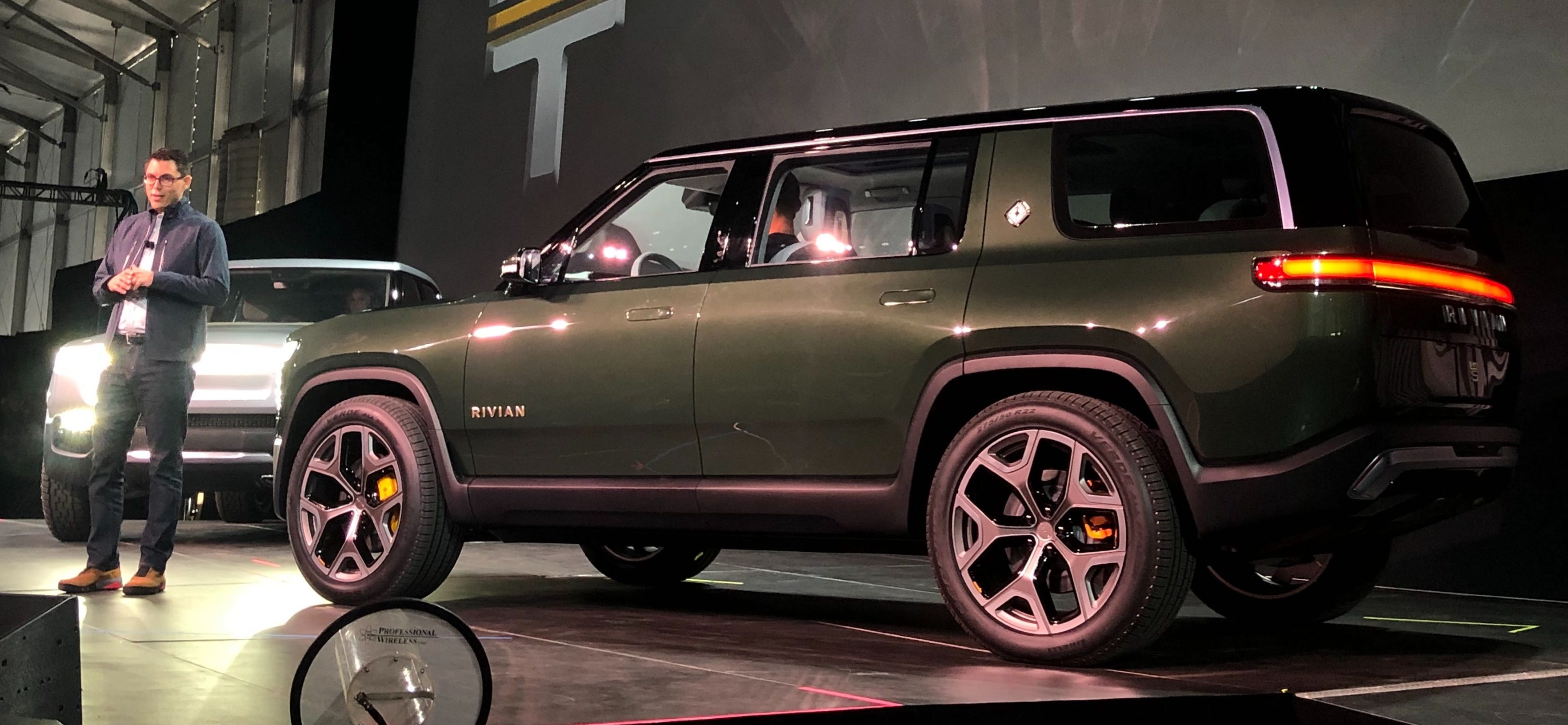

News
Rivian R1S: 7-seat, 410-mile SUV is taking on Land Rover in the luxury off-road game
Rivian CEO and founder RJ Scaringe is adopting a bold and strategic play to enter the auto industry. With the recently unveiled R1T electric pickup truck, Rivian is attempting to breach a market dominated by America’s best-selling vehicles like the Ford F-150. With the R1S SUV, which is set to be unveiled today at the 2018 LA Auto Show, the company is taking on pedigreed carmakers such as Land Rover in the luxury SUV segment.
The Rivian R1S, just like its pickup truck sibling, could be described as a luxury adventure vehicle. The SUV is fitted with the same four 147 kW electric motors that power the R1T, as well as the same 2170 battery cells. Similar to the startup’s pickup truck, the R1S is available in three battery configurations — a 105 kWh entry-level variant, a 135 kWh mid-level version, and a 180 kWh top-tier variant. Compared to the R1T, though, the R1S has slightly more range, with the 105 kWh trim having an estimated range of 240+ miles per charge, the 135 kWh version having 310+ miles of range, and the 180 kWh variant having 410+ miles of range in one charge.
Performance between the R1T and the R1S is identical, with 135 kWh SUV capable of traveling from 0-60 mph in 3 seconds flat. Keeping the company’s character, the R1S could go through up to 1 meter of water. That said, the two vehicles also have their differences.
- The Rivian R1S. [Credit: Rivian]
- The interior of the Rivian R1S. [Credit: Rivian]
- The Rivian R1S dashboard. [Credit: Rivian]
The Rivian R1S SUV. [Credit: Rivian]
The R1S, for one, has a slightly shorter wheelbase at 3,075 mm, which is less than the R1T’s 3,450 mm. Due to the absence of a bed, the R1S’s 5,040 mm overall length is also shorter than the R1T’s 5,475 mm length. Being a three-row SUV capable of seating seven, the R1S does not have as much storage as the R1T as well, with flourishes such as the pickup truck’s “gear tunnel” being absent on the vehicle. That said, the R1S is still capable of hauling a generous amount of cargo, thanks to its 330-liter frunk and its foldable third-row seats.
We asked the company why it opted to release an SUV together with its flagship pickup truck, considering that the SUV market is equally as dominated by big-name, veteran carmakers. Rivian noted that the risk for the R1S is actually quite low, considering that it shares 93% of the R1T pickup truck’s components. The company further pointed out that the SUV market has already been established, and the success of vehicles like the Tesla Model X, which is built on the Model S platform, has proven that cross-pollination is a viable strategy.
- The Rivian R1T and R1S take center stage at the 2018 LA Autoshow
- The Rivian RT1 and the R1S compared. [Credit: Rivian]
Teslarati‘s Christian Prenzler was able to get an early preview of the Rivian R1S prior to its unveiling, and he notes that the vehicle’s overall form and size seem to be similar to the Chevrolet Tahoe and the GMC Yukon. He also stated that the SUV has a liftgate at the rear, which gives passengers a place to sit on. The R1S’ third-row seats, which are usually cramped in conventional SUVs, are also adjustable, allowing passengers to gain more legroom in exchange for less luggage space.
Rivian CEO and founder RJ Scaringe stated that he wants the company’s vehicles to focus on the adventure niche. In this light, the R1S SUV and the R1T electric pickup truck complement each other well, allowing the company to enter two hyper-competitive segments with vehicles that have a serious punch.
“They may have different form factors, they may be different sizes, but every single one of [our products] has to have this Patagonia-like feel of enabling adventure. We want to keep that very sharp. We want to focus only on the adventure space, so customers understand what we stand for,” he said.
Reservations for the R1S SUV are now open. Interested customers can place a refundable $1,000 deposit for the vehicle here. Production is expected to begin in 2021.
With assistance from Christian Prenzler.
Elon Musk
Tesla Supercharger Diner food menu gets a sneak peek as construction closes out
What are you ordering at the Tesla Diner?
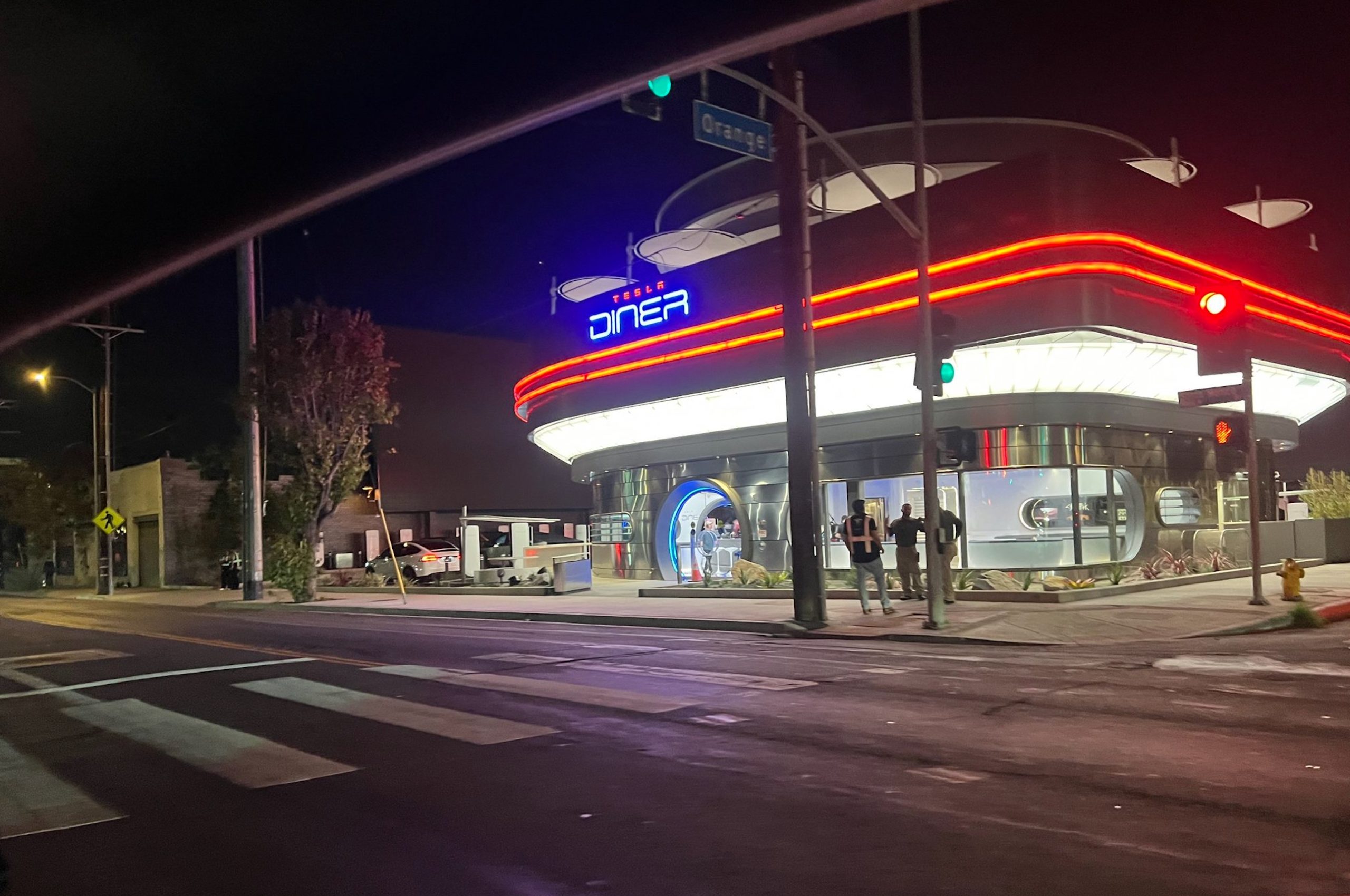
The Tesla Supercharger Diner in Los Angeles is nearing completion as construction appears to be winding down significantly. However, the more minor details, such as what the company will serve at its 50s-style diner for food, are starting to be revealed.
Tesla’s Supercharger Diner is set to open soon, seven years after CEO Elon Musk first drafted the idea in a post on X in 2018. Musk has largely come through on most of what he envisioned for the project: the diner, the massive movie screens, and the intended vibe are all present, thanks to the aerial and ground footage shared on social media.
We already know the Diner will be open 24/7, based on decals placed on the front door of the restaurant that were shared earlier this week. We assume that Tesla Optimus will come into play for these long and uninterrupted hours.
The Tesla Diner is basically finished—here’s what it looks like
As far as the food, Tesla does have an email also printed on the front door of the Diner, but we did not receive any response back (yet) about what cuisine it will be offering. We figured it would be nothing fancy and it would be typical diner staples: burgers, fries, wings, milkshakes, etc.
According to pictures taken by @Tesla_lighting_, which were shared by Not a Tesla App, the food will be just that: quick and affordable meals that diners do well. It’s nothing crazy, just typical staples you’d find at any diner, just with a Tesla twist:
Tesla Diner food:
• Burgers
• Fries
• Chicken Wings
• Hot Dogs
• Hand-spun milkshakes
• And more https://t.co/kzFf20YZQq pic.twitter.com/aRv02TzouY— Sawyer Merritt (@SawyerMerritt) July 17, 2025
As the food menu is finalized, we will be sure to share any details Tesla provides, including a full list of what will be served and its prices.
Additionally, the entire property appears to be nearing its final construction stages, and it seems it may even be nearing completion. The movie screens are already up and showing videos of things like SpaceX launches.
There are many cars already using the Superchargers at the restaurant, and employees inside the facility look to be putting the finishing touches on the interior.
🚨 Boots on the ground at the Tesla Diner:
— TESLARATI (@Teslarati) July 17, 2025
It’s almost reminiscent of a Tesla version of a Buc-ee’s, a southern staple convenience store that offers much more than a traditional gas station. Of course, Tesla’s version is futuristic and more catered to the company’s image, but the idea is the same.
It’s a one-stop shop for anything you’d need to recharge as a Tesla owner. Los Angeles building permits have not yet revealed the date for the restaurant’s initial operation, but Tesla may have its eye on a target date that will likely be announced during next week’s Earnings Call.
News
Tesla’s longer Model Y did not scale back requests for this vehicle type from fans
Tesla fans are happy with the new Model Y, but they’re still vocal about the need for something else.

Tesla launched a slightly longer version of the Model Y all-electric crossover in China, and with it being extremely likely that the vehicle will make its way to other markets, including the United States, fans are still looking for something more.
The new Model Y L in China boasts a slightly larger wheelbase than its original version, giving slightly more interior room with a sixth seat, thanks to a third row.
Tesla exec hints at useful and potentially killer Model Y L feature
Tesla has said throughout the past year that it would focus on developing its affordable, compact models, which were set to begin production in the first half of the year. The company has not indicated whether it met that timeline or not, but many are hoping to see unveilings of those designs potentially during the Q3 earnings call.
However, the modifications to the Model Y, which have not yet been officially announced for any markets outside of China, still don’t seem to be what owners and fans are looking forward to. Instead, they are hoping for something larger.
A few months ago, I reported on the overall consensus within the Tesla community that the company needs a full-size SUV, minivan, or even a cargo van that would be ideal for camping or business use.
Tesla is missing one type of vehicle in its lineup and fans want it fast
That mentality still seems very present amongst fans and owners, who state that a full-size SUV with enough seating for a larger family, more capability in terms of cargo space for camping or business operation, and something to compete with gas cars like the Chevrolet Tahoe, Ford Expedition, or electric ones like the Volkswagen ID.BUZZ.
We asked the question on X, and Tesla fans were nearly unanimously in support of a larger SUV or minivan-type vehicle for the company’s lineup:
🚨 More and more people are *still* saying that, despite this new, longer Model Y, Tesla still needs a true three-row SUV
Do you agree? https://t.co/QmbRDcCE08 pic.twitter.com/p6m5zB4sDZ
— TESLARATI (@Teslarati) July 16, 2025
Here’s what some of the respondents said:
100% agree, we need a larger vehicle.
Our model Y is quickly getting too small for our family of 5 as the kids grow. A slightly longer Y with an extra seat is nice but it’s not enough if you’re looking to take it on road trips/vacations/ kids sports gear etc.
Unfortunately we…
— Anthony Hunter (@_LiarsDice_) July 17, 2025
Had to buy a Kia Carnival Hybrid because Tesla doesn’t have a true 3 row vehicle with proper space and respectable range. pic.twitter.com/pzwFyHU8Gi
— Neil, like the astronaut (@Neileeyo) July 17, 2025
Agreed! I’m not sure who created this but I liked it enough to save it. pic.twitter.com/Sof5nMehjS
— 🦉Wise Words of Wisdom – Inspirational Quotes (IQ) (@WiseWordsIQ) July 16, 2025
Tesla is certainly aware that many of its owners would like the company to develop something larger that competes with the large SUVs on the market.
However, it has not stated that anything like that is in the current plans for future vehicles, as it has made a concerted effort to develop Robotaxi alongside the affordable, compact models that it claims are in development.
It has already unveiled the Robovan, a people-mover that can seat up to 20 passengers in a lounge-like interior.
The Robovan will be completely driverless, so it’s unlikely we will see it before the release of a fully autonomous Full Self-Driving suite from Tesla.
Energy
Tesla launches first Virtual Power Plant in UK – get paid to use solar
Tesla has launched its first-ever Virtual Power Plant program in the United Kingdom.
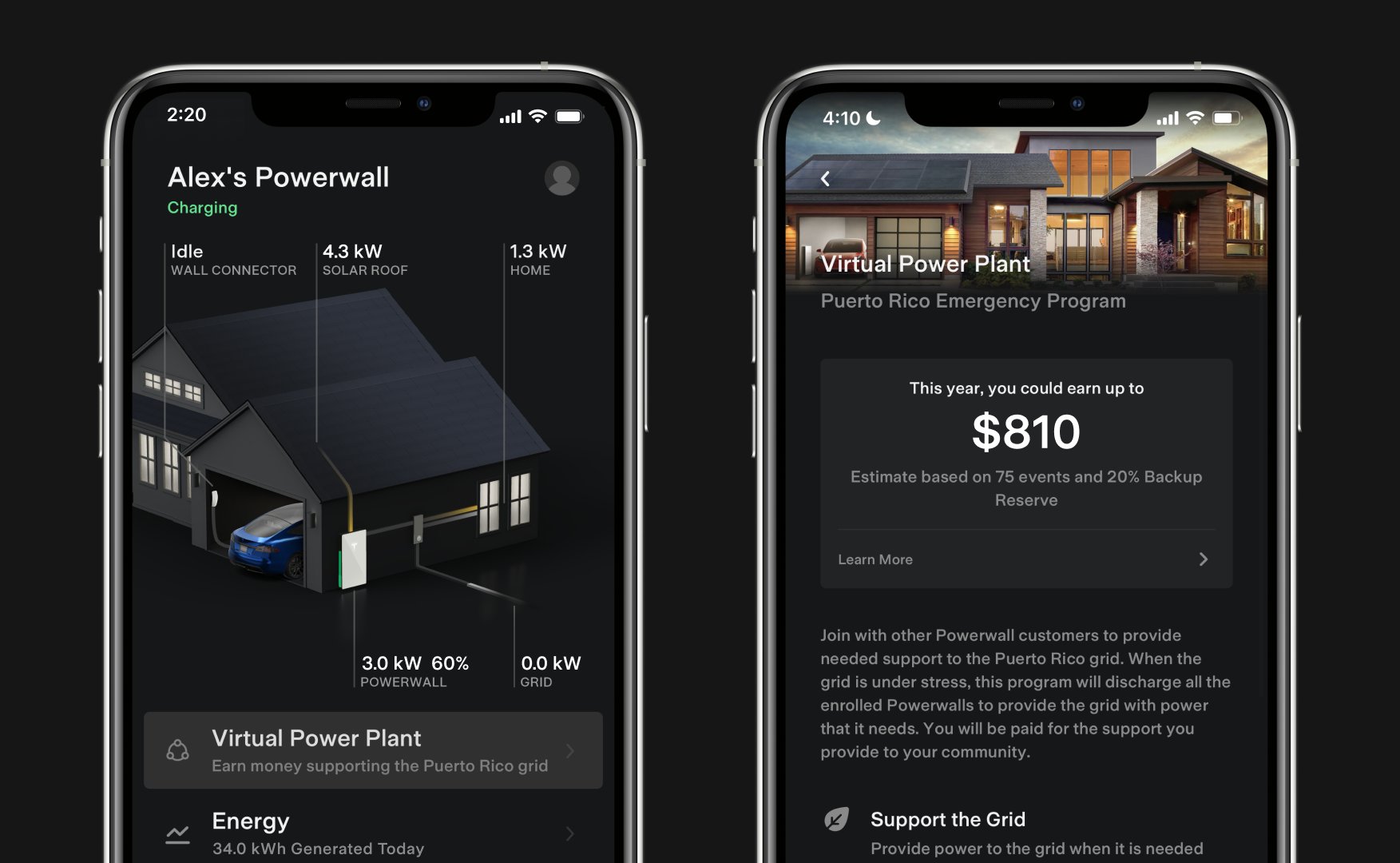
Tesla has launched its first-ever Virtual Power Plant program in the United Kingdom. This feature enables users of solar panels and energy storage systems to sell their excess energy back to the grid.
Tesla is utilizing Octopus Energy, a British renewable energy company that operates in multiple markets, including the UK, France, Germany, Italy, Spain, Australia, Japan, New Zealand, and the United States, as the provider for the VPP launch in the region.
The company states that those who enroll in the program can earn up to £300 per month.
Tesla has operated several VPP programs worldwide, most notably in California, Texas, Connecticut, and the U.S. territory of Puerto Rico. This is not the first time Tesla has operated a VPP outside the United States, as there are programs in Australia, Japan, and New Zealand.
This is its first in the UK:
Our first VPP in the UK
You can get paid to share your energy – store excess energy in your Powerwall & sell it back to the grid
You’re making £££ and the community is powered by clean energy
Win-win pic.twitter.com/evhMtJpgy1
— Tesla UK (@tesla_uk) July 17, 2025
Tesla is not the only company that is working with Octopus Energy in the UK for the VPP, as it joins SolarEdge, GivEnergy, and Enphase as other companies that utilize the Octopus platform for their project operations.
It has been six years since Tesla launched its first VPP, as it started its first in Australia back in 2019. In 2024, Tesla paid out over $10 million to those participating in the program.
Participating in the VPP program that Tesla offers not only provides enrolled individuals with the opportunity to earn money, but it also contributes to grid stabilization by supporting local energy grids.
-
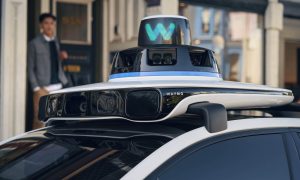
 Elon Musk1 day ago
Elon Musk1 day agoWaymo responds to Tesla’s Robotaxi expansion in Austin with bold statement
-
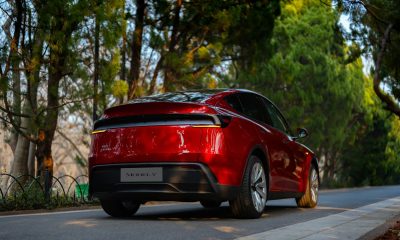
 News1 day ago
News1 day agoTesla exec hints at useful and potentially killer Model Y L feature
-
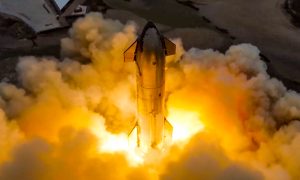
 Elon Musk2 days ago
Elon Musk2 days agoElon Musk reveals SpaceX’s target for Starship’s 10th launch
-

 Elon Musk3 days ago
Elon Musk3 days agoTesla ups Robotaxi fare price to another comical figure with service area expansion
-
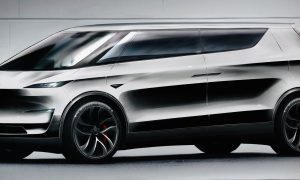
 News1 day ago
News1 day agoTesla’s longer Model Y did not scale back requests for this vehicle type from fans
-
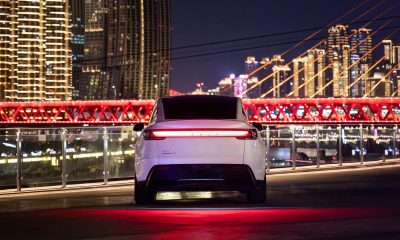
 News1 day ago
News1 day ago“Worthy of respect:” Six-seat Model Y L acknowledged by Tesla China’s biggest rivals
-
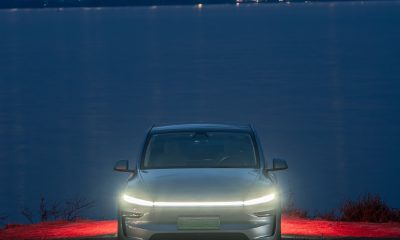
 News2 days ago
News2 days agoFirst glimpse of Tesla Model Y with six seats and extended wheelbase
-

 Elon Musk2 days ago
Elon Musk2 days agoElon Musk confirms Tesla is already rolling out a new feature for in-car Grok





















